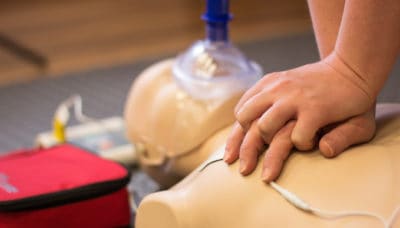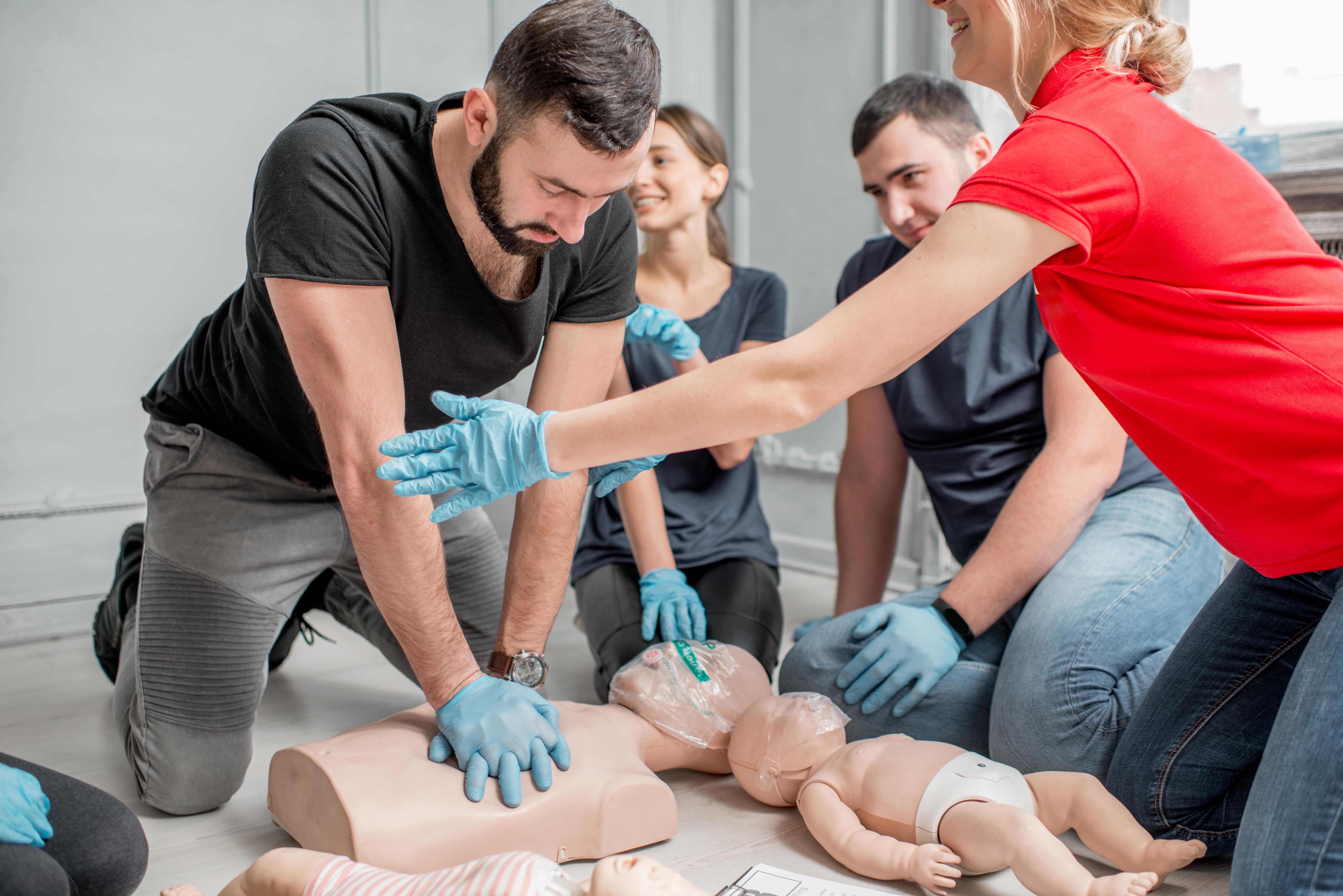Introduction
In today's globe, emergencies can strike anytime, and being prepared is necessary. One of the essential skills that can conserve lives is cardiopulmonary resuscitation (CPR). Teenagers represent an important populace that can be educated to respond successfully in emergency situations. By outfitting them with CPR training, we not only equip them with life-saving skills however also cultivate a culture of readiness and responsibility. This write-up explores the relevance of mouth-to-mouth resuscitation training for teens, what to expect in emergency treatment training courses, and just how these skills add to their personal development and neighborhood safety.
Understanding CPR Educating for Teenagers: Preparing the Next Generation for Emergencies
What is CPR?
Cardiopulmonary resuscitation (MOUTH-TO-MOUTH RESUSCITATION) is a lifesaving strategy made use of during emergencies when a person's heart beat or breathing has quit. It contains breast compressions and rescue breaths that help preserve blood flow to crucial organs up until expert clinical aid shows up. Understanding the basics of mouth-to-mouth resuscitation is important for teenagers that may discover themselves in emergency situation situations.
Why Do Teenagers Required Mouth-to-mouth Resuscitation Training?
Teens are frequently at social gatherings, sporting activities occasions, or even home parties where emergencies could occur. By finding out CPR, they come to be positive participants of their area who can act emphatically during crises. The capability to execute CPR with confidence can turn a potentially awful situation right into one where lives are saved.
Benefits of First Aid Courses for Teens
First help courses do more than just show individuals just how to supply immediate care; they infuse confidence and reinforce problem-solving abilities. For teens, this experience can construct personality and encourage management qualities.
- Empowerment: Understanding of emergency treatment and mouth-to-mouth resuscitation encourages young people. Confidence Structure: Effectively finishing a training course supplies teens with a feeling of achievement. Community Service: Educated teens can volunteer in different settings such as schools or sports teams.
The Framework of mouth-to-mouth resuscitation Courses for Teens
Course Duration and Format
Most first aid courses are designed to fit within a couple of hours to a couple of days, relying on the depth of training supplied. Generally, a basic emergency treatment course will cover:
- Theory: The concepts behind emergency treatment techniques. Practical Abilities: Hands-on exercise with mannequins or via simulations.
Key Elements Covered in Emergency Treatment Courses
Understanding Emergency situation Situations- Recognizing when to require help Assessing the scene for safety
- Performing top quality upper body compressions Providing rescue breaths correctly
- Learning how to run an AED Importance of very early defibrillation
- Techniques for adults, youngsters, and infants Recognizing indications of airway obstruction
- Cuts and scrapes Sprains and fractures
The Relevance of Qualification in Emergency Treatment Training
Obtaining Your First Aid Certificate
Completing an emergency treatment course typically culminates in obtaining a certification that confirms your skills. This certificate offers multiple purposes:
- It demonstrates competence in emergency response. Many organizations call for accreditation for engagement in specific events.
Keeping Accreditations Current
Just like any kind of life ability, it is necessary to keep your expertise up-to-date. The majority of companies recommend renewing accreditations every two years.
How Teens Can Get Entailed with First Aid Training
Finding Neighborhood Emergency treatment Courses
Teenagers thinking about gaining their emergency treatment certification need to explore neighborhood community centers, schools, or wellness organizations that use certified training courses.
Helpful Resources:
- American Red Cross St John Ambulance Local hospitals or health and wellness departments
Online vs In-Person Training Options
With developments in technology, on the internet modules have ended up being prominent yet may do not have hands-on method essential for really understanding techniques. A mixed strategy-- integrating on-line concept with useful sessions-- could be most beneficial.
Creating Recognition Amongst Peers regarding CPR Training for Teenagers: Preparing the Next Generation for Emergencies
Peer Education Initiatives
Encouraging teens to share what they have actually discovered with their buddies can magnify the effect of training programs:
- Forming study groups concentrated on emergency preparedness. Hosting workshops at institutions or area centers.
Using Social Media as a Platform
Teens today are heavily engaged on social media sites platforms; making use of these channels can aid spread understanding about the relevance of first aid training amongst peers.
Real-Life Stories That Emphasize the Importance of Mouth-to-mouth Resuscitation Training for Teens
Case Research study 1: Conserving a Life at Institution Sports Event
A teenager learnt mouth-to-mouth resuscitation had the ability to save their good friend's life throughout a soccer suit when he broke down on the area due to cardiac arrest. Their quick thinking enabled them to carry out appropriate upper body compressions till emergency solutions arrived.
Case Study 2: Household Emergency at Home
Another instance entailed brother or sisters who had actually taken a first aid course with each other. When their more youthful sibling mistakenly choked on food throughout supper, they quickly understood what actions to take since they remembered their training-- leading them successfully via the emergency.
Frequently Asked Questions (FAQs) About Teen CPR Training
1. What age must teenagers start taking CPR courses?
The majority of organizations suggest starting as early as 12 years of ages; nonetheless, younger children can likewise find out standard principles via appropriate programs customized to their age group.

2. How much time does it require to finish a first aid course?
Courses commonly vary from 4 hours as much as 16 hours relying on web content deepness-- the average being around 8 hours.

3. Exist any requirements before enrolling?
No formal requirements exist; nonetheless, it's practical if individuals have an understanding of standard medical terms.
4. Will certainly I receive qualification after finishing my course?
Yes! Upon effective completion and passing any kind of needed analyses you'll obtain an official emergency treatment certificate legitimate for 2 years.
5. Can I take these training courses online?
Many establishments supply hybrid layouts integrating online concept with called for practical sessions kept in person-- this is advised by market standards.
6. Is it needed to restore my certification periodically?
Yes! Regular recertification guarantees your skills remain skillful You can find out more and up-to-date according to present guidelines.
Conclusion
In verdict, outfitting young adults with knowledge about cardiopulmonary resuscitation (CPR) via specialized training programs is vital not only for their development however likewise boosts neighborhood security in general. With efficient training resources available-- from neighborhood training courses supplying thorough guideline on both fundamental first aid techniques along with sophisticated life assistance approaches-- it's much easier than ever for young people eager about making an impactful distinction throughout emergencies!
As we move on right into an unpredictable world filled with obstacles requiring speedy activity-- let us spend our efforts towards educating this next generation so they're prepared not just academically however additionally practically geared up when dealt with versus real-life situations requiring urgent responses like those requiring timely interventions such as carrying out effective cardiopulmonary resuscitation (MOUTH-TO-MOUTH RESUSCITATION).
